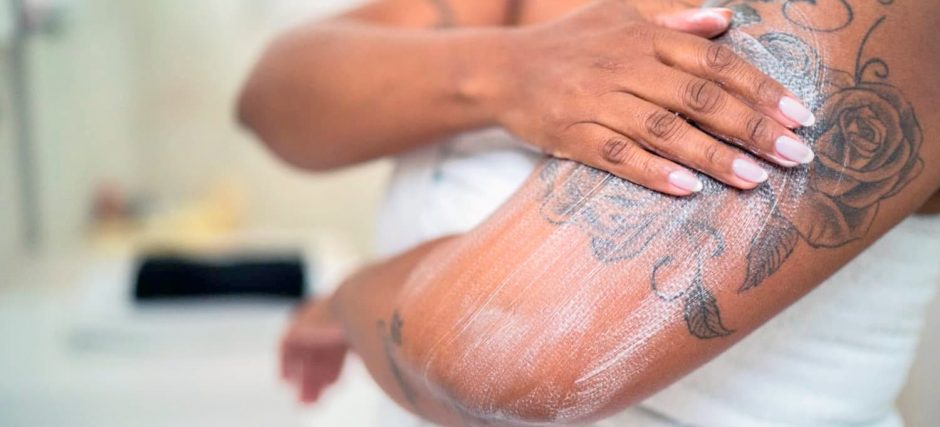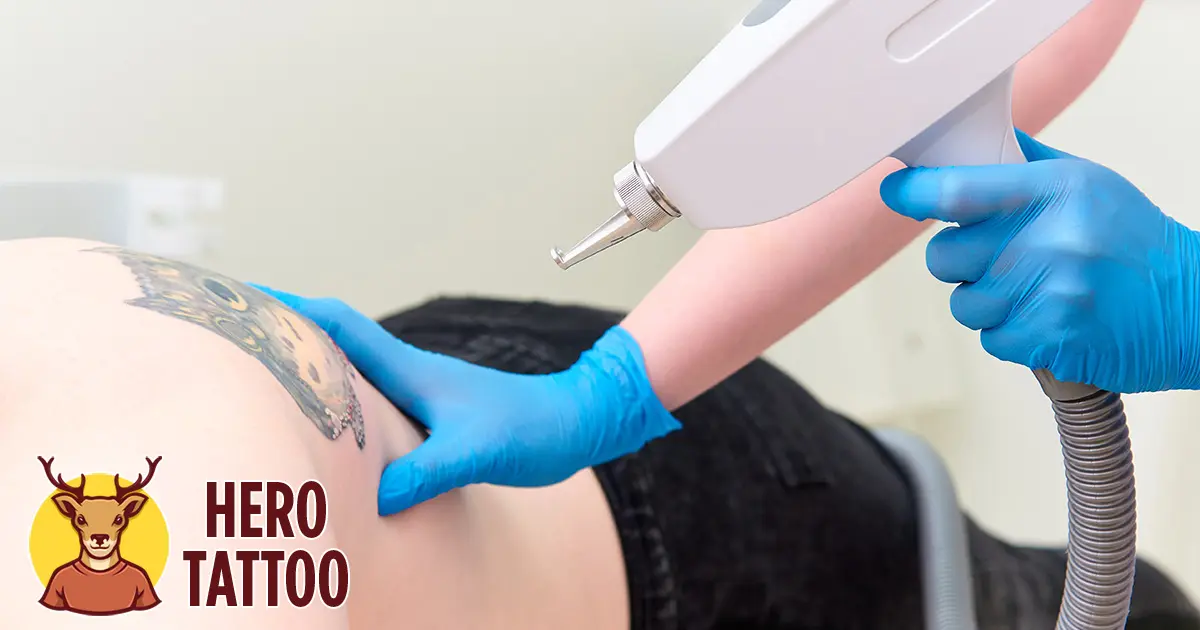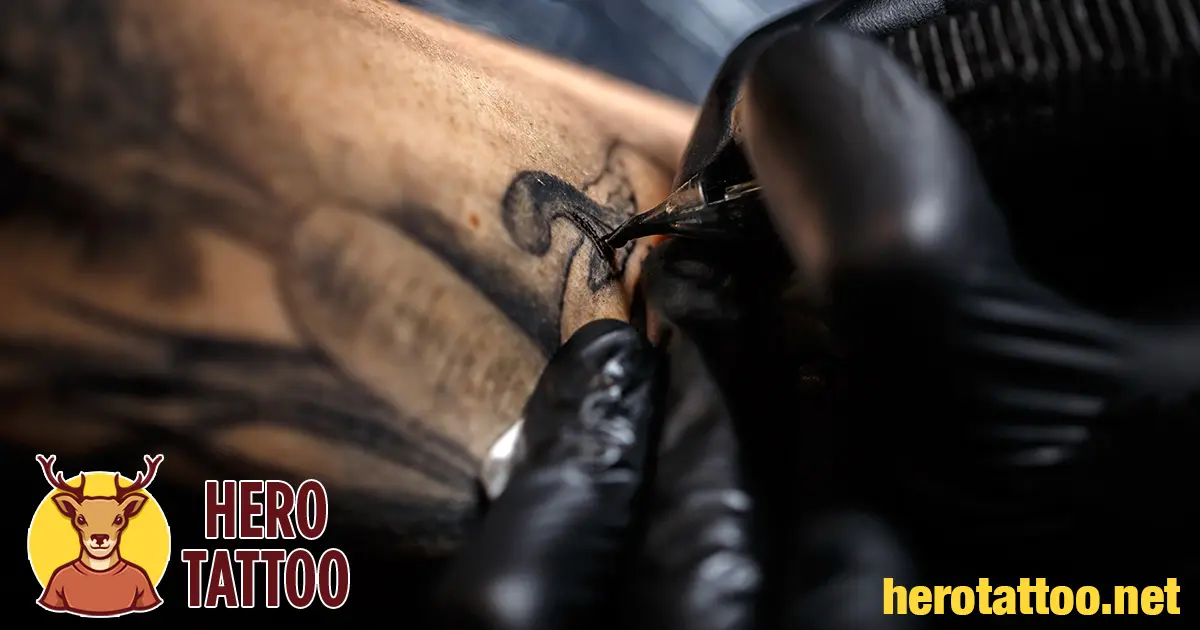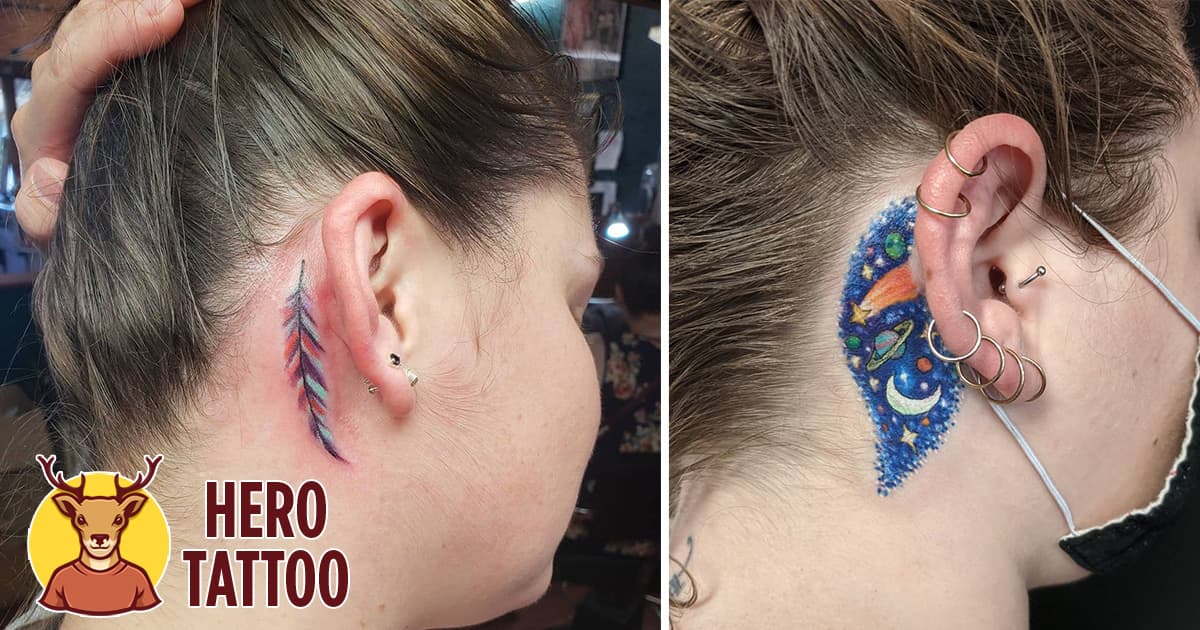If you are reading this, it is a good possibility that you recently received your first tattoo and are now dealing with the scabbing that comes with it. We are aware that scabs may look frightening, yet there is a rationale behind why they develop. If, however, the scabs begin bleeding, this could indicate a more serious underlying problem. If you have noticed that the scabs covering your tattoos are bleeding, you have arrived at the correct location.
Continue reading to get the information you need to take the next step in this process. In the following paragraphs, we will discuss all you need to know about tattoo scabs, bleeding, and how to prevent or treat them. So, without further ado, let’s get the ball rolling here, shall we?
The Definitive Guide to Tattoo Scabs and What You Need to Know
What Is It That Scabs Are?
A scab, also called a tattoo scab, is a protective covering of tissue that grows on the surface of wounded skin. Do you remember how, when you were younger and played in the park, a crust would form over the spot where you had hurt yourself every time you got up from a fall? This scab was forming to protect the skin and give it a safe place to heal.
Scabs are an event that can be considered, to some degree, completely normal. In most cases, they become dry and brittle while the skin is mending, and then they fall off on their own.
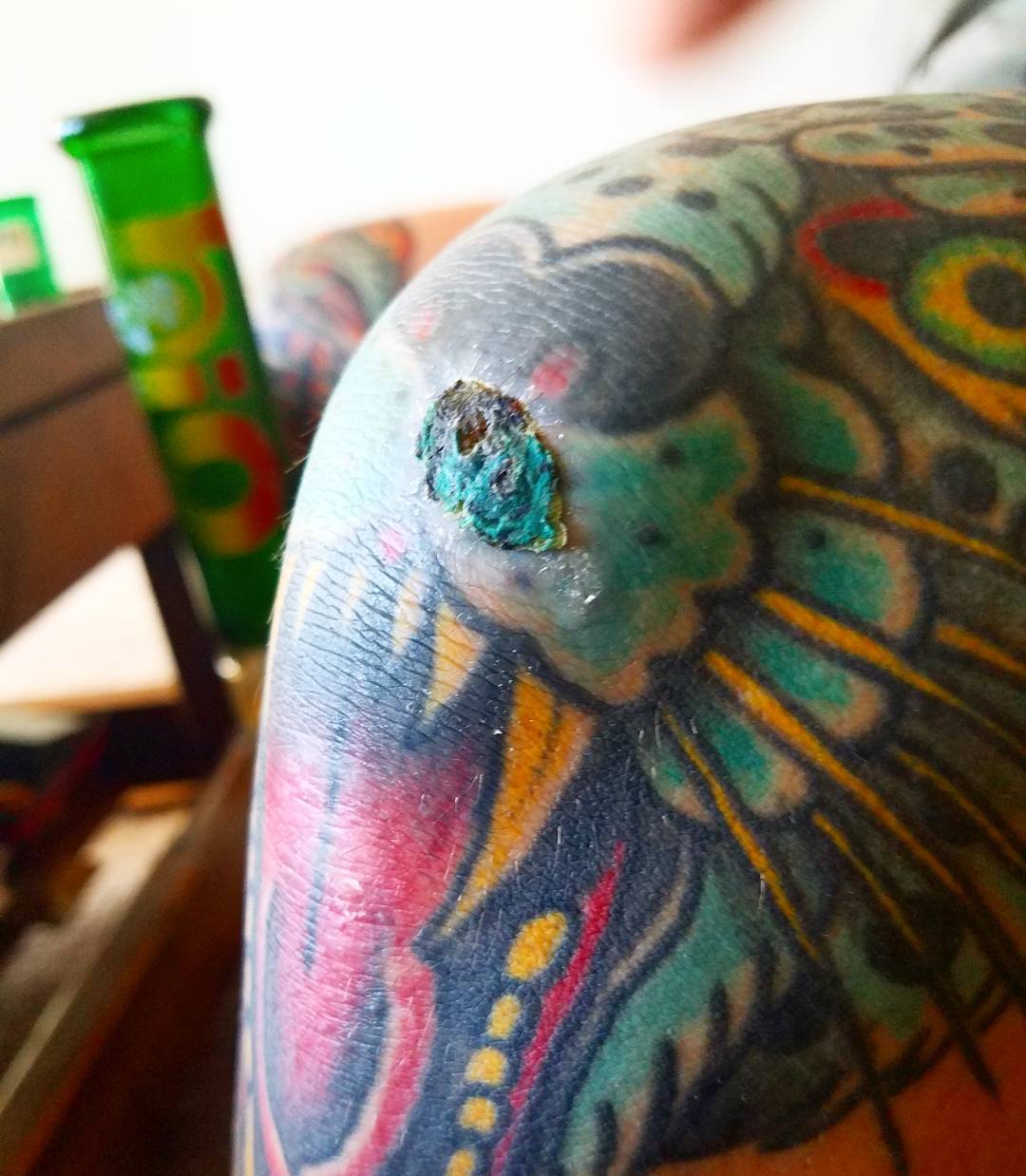
What Causes the Formation of Scabs on Tattoos?
As was stated previously, scabs develop on top of skin that has been damaged or harmed. A freshly applied tattoo is considered an open wound because it causes damage to the skin, even though this may not appear to be the case. In addition, the tattoo needs to heal the same way as any other lesion or damage does.
A tattoo may take many weeks to heal correctly, but the first seven to ten days are extremely important for skin sealing. When this occurs, tattoo scabs begin to form to ensure that the tattooed skin underneath is healing correctly and concurrently closing the wound. This is done to prevent infection. When the tattoo has been healing for about four days, you can expect the scabs to start to form.
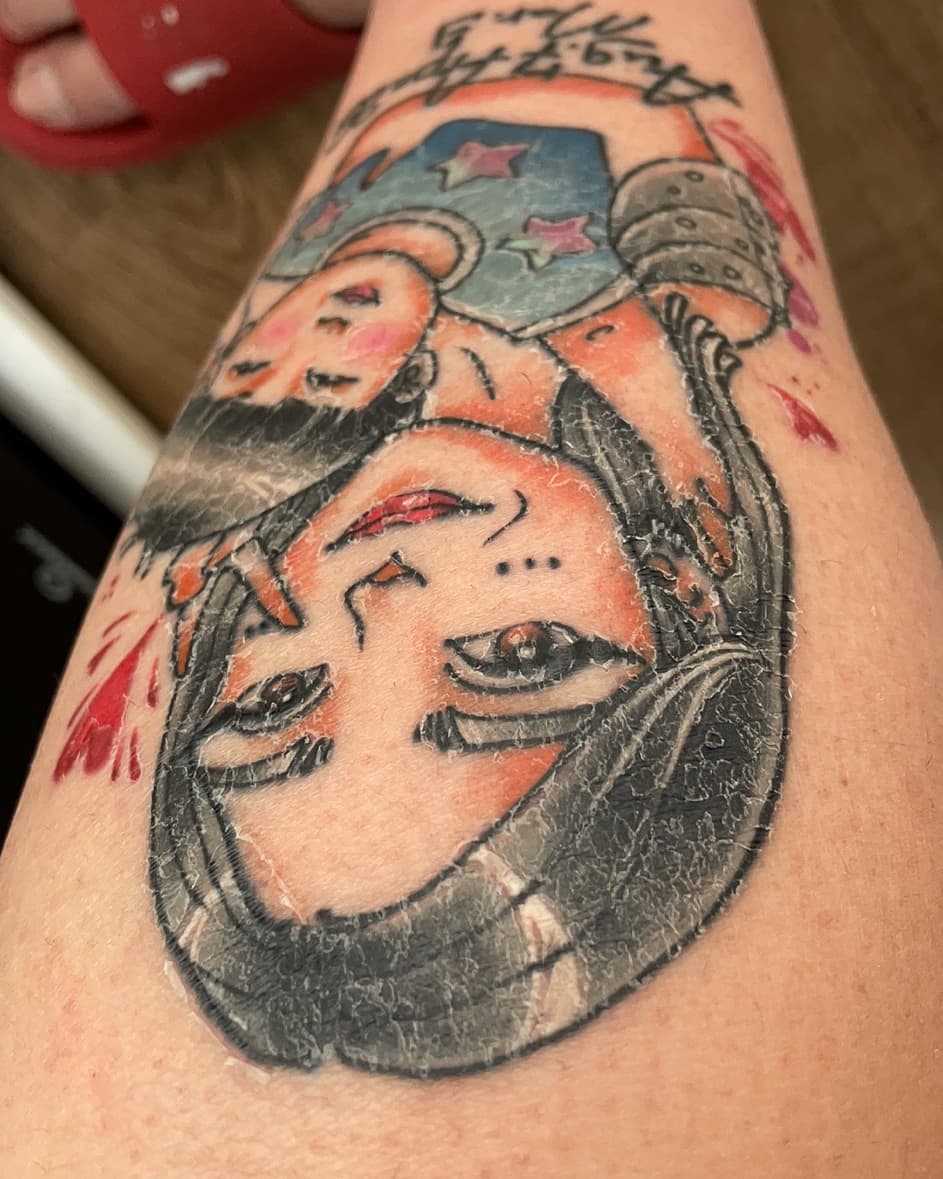
How Long Does a Scab Remain on a Tattoo?
The scabs that form after getting a tattoo can remain for anywhere from one to two weeks, depending on several conditions. By the end of the third week of the healing process, the crusts that are the thickest should have fallen off. The rate at which scabs grow and the length of time they remain on the skin are both influenced by many different factors, including the following:
- Tattoo placement
- The magnitude of the tattoo, as well as the hue of the ink
- type of skin and skin sensitivity.
- Time set aside for one’s recovery (depending on your health and the ability of the body to deal with tattoo injury and ink)
- The atmosphere and the current temperature
- Hydration as well as the moisturizing of the skin
- Nutrition, diet, and general physical fitness-related physiological and metabolic factors
So, is it normal for a tattoo to scab?
During the healing process, some scabbing at the tattoo site is not only natural and even to be expected, but is also preferred. Because of the scabbing, the tattoo will be able to close, and the healing process will be finished.
Scabbing is considered typical, although only a fragile covering is acceptable. The scab must be thin, drying out, and about to fall off.
However, you ought to be concerned if the scabbing is thick and heavy or if there is a significant amount of it. Excessive scabbing may indicate poor healing, an allergy to the ink, or even an infection. But in addition to scabbing, these kinds of injuries cause the skin to swell, turn red, hurt, leak, bleed, and even get very hot.
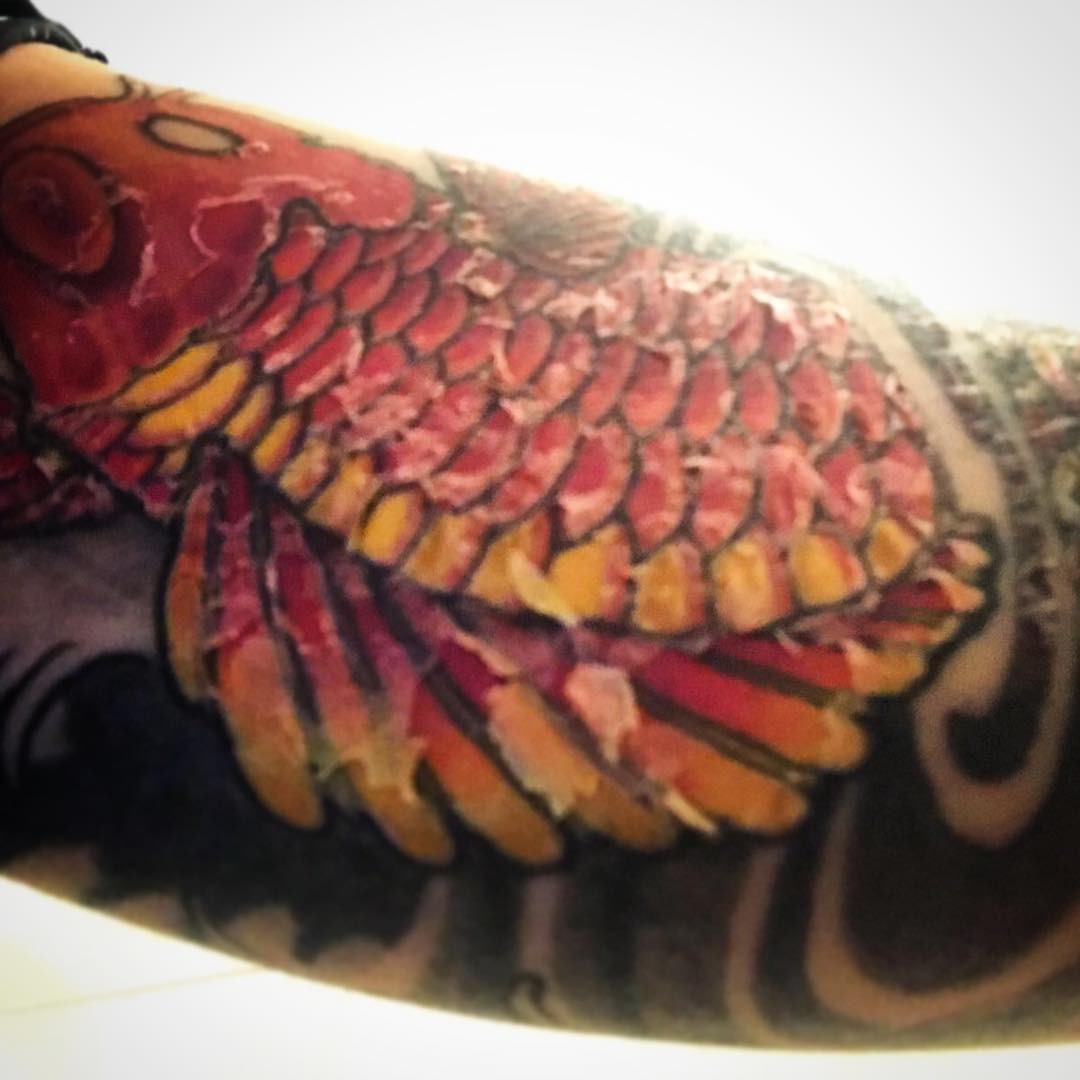
How Should I Take Care of the Scabs Left Behind by My Tattoo?
When it comes to scabs, one of the most important things to remember is that you should never touch them or try to peel them off. This can completely mess up the design of the tattoo, and it can also introduce bacteria into the tattoo. You should avoid picking at the scabs covering your tattoo because doing so can lead to infection of the tattoo. You do not want that kind of hassle.
In addition, you should thoroughly moisturize the tattoo once or twice every day to keep the skin hydrated. This will avoid the growth of significant scabs and ensure that they dry up as rapidly as possible so they may be readily shed.
Your hands should always be thoroughly washed with a mild antibacterial soap before applying moisturizer or handling the tattoo. When the wound is open and still healing, you don’t want to risk contaminating it with germs and bacteria.
What Causes the Bleeding from My Tattoo Scabs?
A few factors might cause tattoo scans to bleed, and each of these factors can be attributed to either you or an underlying problem.
When we say that you’ve caused the bleeding, we mean that you’ve committed the sin, which in the tattoo community is pulling the scabs off a new tattoo. This is considered a cardinal sin. You can undo the healing the tattoo has done so far by picking at the scabs and scraping them off, revealing the tender, freshly inked skin underneath.
This indicates that your tattoo will be responsible for its healing from the beginning, which is a riskier proposition than it was in the past. Why? Because you have now exposed a tattoo that is healing to bacteria and germs, there is a possibility that it will become infected. It’s possible that you messed up the design, which could have led to the ink leaking out.
However, even if you haven’t touched or peeled off the scabs, they can still bleed for some reason. There is a good likelihood that you are suffering from an ink allergy or a tattoo infection. However, bleeding from scabs is not the only clue that you are dealing with an allergic reaction or an infection. Other symptoms include:
Both conditions are accompanied by symptoms such as redness, swelling of the skin, extreme itching, rashing, and other symptoms. Some people feel weak, more significant discomfort in the inked area, nausea, and fever after getting a tattoo. Getting immediate medical attention should be your top concern in circumstances like these.
Therefore, we can conclude that bleeding from a scab never occurs for no apparent reason. Things like picking at the scabs can bring on an external factor like an internal inflammation brought on by an allergic reaction to the ink, an infection, or both.
What Should Be Done When the Scabs Begin to Bleed?
If you scratched or pulled off any of the scabs, the following advice could help you stop the bleeding:
- Contact your tattoo artist – Get in touch with your tattoo artist and discuss the situation with them, explaining what took place and requesting some guidance from them. As a result, tattoo artists are exposed to a wide variety of customers regularly. As a result, they are accustomed to customers picking at their scabs and peeling them off. Because tattooists are trained professionals and specialists, the person who did your ink should know how to ensure that your tattoo continues to heal correctly.
- Make sure to clean the tattoo – Be sure to clean the tattoo since this is the best thing you can do if the scab starts leaking again after it has been removed. Always wash the tattoo with lukewarm water and a tattoo soap that is mild and antibacterial. After washing everything, use a clean towel to pat dry the region where the tattoo is located gently.
Paper towels should not be used since they have the potential to get stuck on the tattoo and cause extra complications. Be careful with the towel as well, as the residual scabs might stick to the towel; if you push on them, you might also be able to peel them off.
- Keep the tattoo moisturized – Maintaining the tattoo’s moisture is essential; after washing and drying the tattoo, you should apply products that moisturize it. Suppose you want your skin to recover and heal more quickly without developing a new layer of scabs. In that case, you should look for healing treatments containing panthenol.
To prevent the tattoo from drying out, ensure you moisturize it at least twice a day, particularly after washing it. Most of the time, a dry tattoo is caused by a lot of scabbing, which can lead to irritation, cracking, bleeding, and infection if it is not taken care of properly.
- Consider booking a touch-up session – You should consider scheduling a touch-up session because when a tattoo scab bleeds, it allows ink to seep underneath it.Because of this, you should prepare for the fact that the fully healed tattoo will not look like the one you envisioned. After the tattoo has completely healed, you should schedule a session for a touch-up as soon as possible. Your tattoo artist will correct the areas that were done incorrectly and guarantee that the finished tattoo represents the original design.
- Do not touch, pick or peel new or remaining scabs – It would help if you had already been aware of this cardinal sin, so refrain from touching, picking, or peeling any new or remaining scabs. To be clear, you should not touch, pick at, or peel any scabs, including those recently formed. This may result in further bleeding, heavier scabbing, skin swelling, ink spilling, and infection.
If the scabs on your tattoo are bleeding but you haven’t picked at them or ripped them off, you most likely have an infection or an allergy to the ink in your tattoo. In any case, you should consult a doctor to receive an accurate diagnosis and appropriate therapy. Ink seeping from the tattoo, skin swelling, redness, rashes, increased pain, and even fever are common symptoms that accompany tattoo infections and ink allergies. Therefore, pay attention to such signs to better grasp what could be happening with your tattoo.
A Few Parting Thoughts
Scabbing is a common side effect of getting a tattoo. There may be some light scabbing around your tattoo, but you shouldn’t be concerned about it. The scab will ultimately dry up and peel off, revealing a beautifully healed tattoo. However, if you touch the tattoo scabs or try to pick There may be some light scabbing around your tattoo, but you shouldn’t be concerned about it. The scab will ultimately dry up and peel off, revealing a beautifully healed tattoo. However, if you touch the tattoo scabs or try to pick them up or peel them off, you should anticipate bleeding and possible damage to the tattoo. The healing process, which is usually relatively straightforward, will be significantly more challenging.
On the other hand, if the scabs that have been removed from your tattoo start bleeding on their own, you should most likely go to the emergency room to find out if you are suffering from a tattoo infection or an allergy to the ink. In any case, getting the appropriate therapy will get you through this crisis. A simple touch-up on your tattoo will make it look good again.
It’s more fun to share!
